Estimated reading time: 14 minutes
Welcome to your ultimate guide on the exclusive concept of covering doorways without resorting to conventional doors. It’s a fascinating interior design solution transforming how we perceive and utilize our home spaces.
It’s all about rethinking the functionality and aesthetics of the traditional entrance. Instead of using a standard door, you fill or cover this opening in a stylish, yet practical manner. The goal is to maintain the necessary level of privacy while adding a touch of originality to your room. It could involve various unique elements like curtains, Roman shades, bookcases, or even decorative room dividers. No matter the choice, the change is bound to breathe new life into your home, making it cozier, more personalized, and more inviting.
Table of contents
Considerations Before Covering a Doorway
Before you start covering a doorway, it’s important to consider a few key elements:
- Do you need to fill the doorway?
- How much is your budget?
- What are the material options?
Take a moment to think about these questions. It could save you a lot of time, money, and potential disappointment down the road.
Do you need to fill the doorway?
First, ask yourself, “Do I need to cover this doorway?” Often, people rush to it for aesthetic reasons without considering the functional needs of the space. Maybe you want to add a sense of privacy, control the flow of light, or simply make the room look more visually appealing. Whatever the reason, it’s important to weigh it against the practicality and the impact it will have on the functionality of the space. Do you still need an open-access option, or do you want to close off the room entirely?
How Much Is Your Budget?
Once you’re determined to cover the doorway, the next step is to consider the cost. This consideration will largely depend on the method you choose. For instance, a simple curtain is relatively cheap, while installing a bookcase or a more advanced option like Shoji sliding doors is more expensive.
What are the material options?
The final aspect to consider is the planning and material selection. You need to choose a solution that fits the design and feel of your space. While a beaded curtain might add a fun aesthetic to a teenager’s room, it might not fit an elegant dining room best.
Material selection also plays a massive role in how effective your doorway covering solution will be. For instance, thick materials like heavy curtains or rugs are great for blocking noise and light and cold drafts. In contrast, lighter materials like bamboo curtains will provide privacy without blocking all the light.
How to Cover a Doorway Without a Door
Whether you want to get creative or budget-friendly, numerous options are available to cover a doorway without applying a traditional door. Here is a breakdown of some of these options, starting with the good ol’ faithful curtains.
1. Rgular Curtains
One of the simplest and most affordable ways to cover a doorway involves using a curtain. Like your windows, the right curtain can add a splash of color, design, or elegance that complements your interior decor. Depending on your privacy needs and aesthetic taste, you can either go for floor-length designs or shorter ones. Installation is quite easy; get a tension rod to fit the doorway, hang the curtain, and voila!
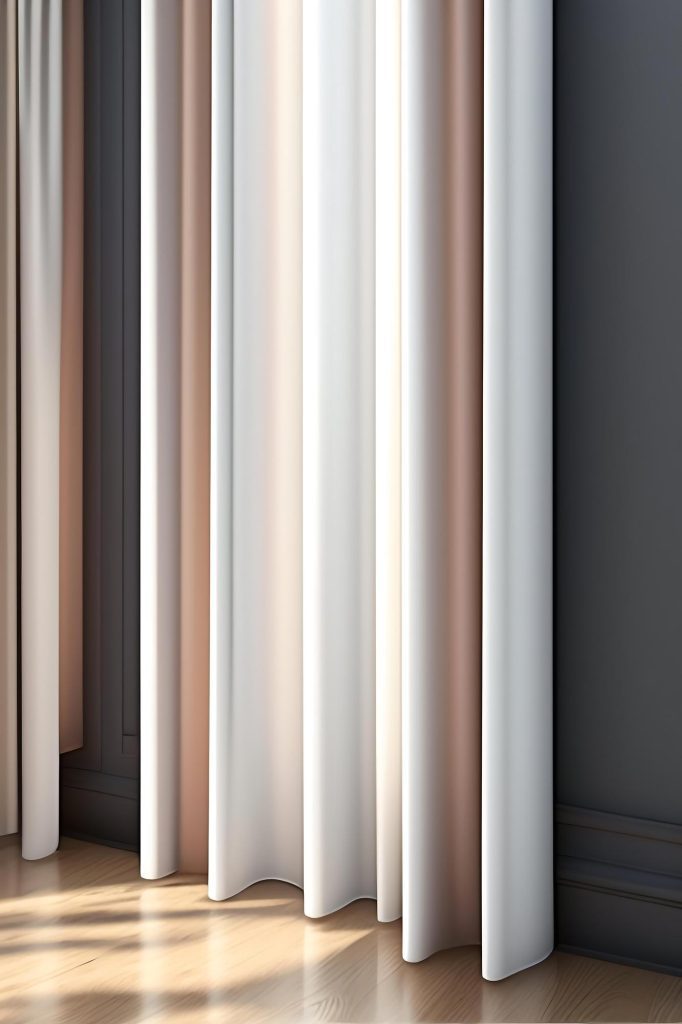
2. Beaded Curtains
Beaded strings offer a fun and retro way to cover your doorway. Remember those colorful beaded curtains popular in the 70s? Well, they are back in style!
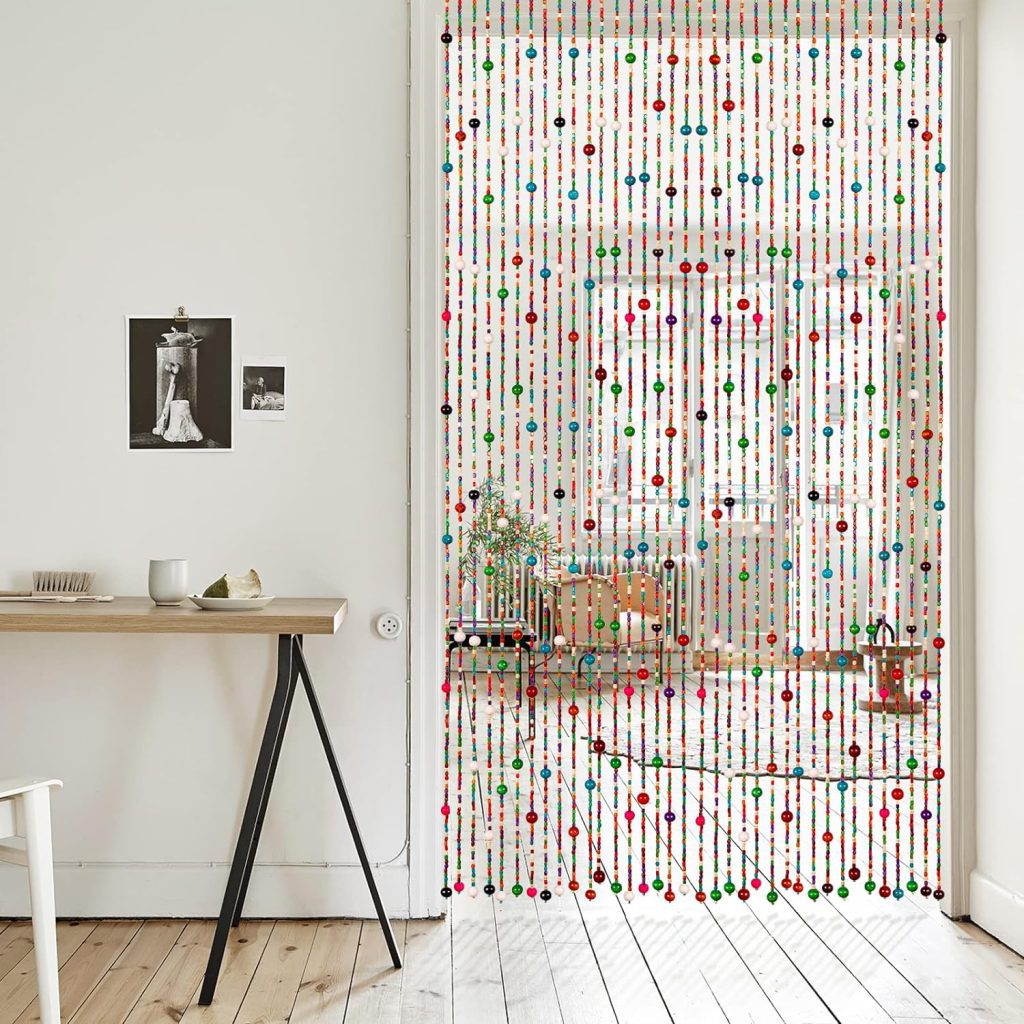
If you want to add a retro vibe to your space, beaded strings are a great choice. These curtains feature strings of beads suspended from a top rod. Breezy, charming, and promising for allowing light, beaded curtains are perfect for a relaxed, warm, and welcoming feel. While they don’t afford much privacy, they are perfect for separating spaces while maintaining a spacious, open vibe.
3. Japanese Style Doorway Curtains
Japanese Style Curtains, or “Noren” for a bit of Asian flair, consider a Noren. Essentially, these are traditional Japanese fabric dividers hung at the entrance to a room or space. They come in various sizes, patterns, and designs, often featuring beautiful Japanese art. Noren are perfect for providing a modicum of privacy, and they act as a flexible ‘door’ that you can easily pass through. With a Noren, you will add a touch of oriental style, sophistication, and mystery to your home.
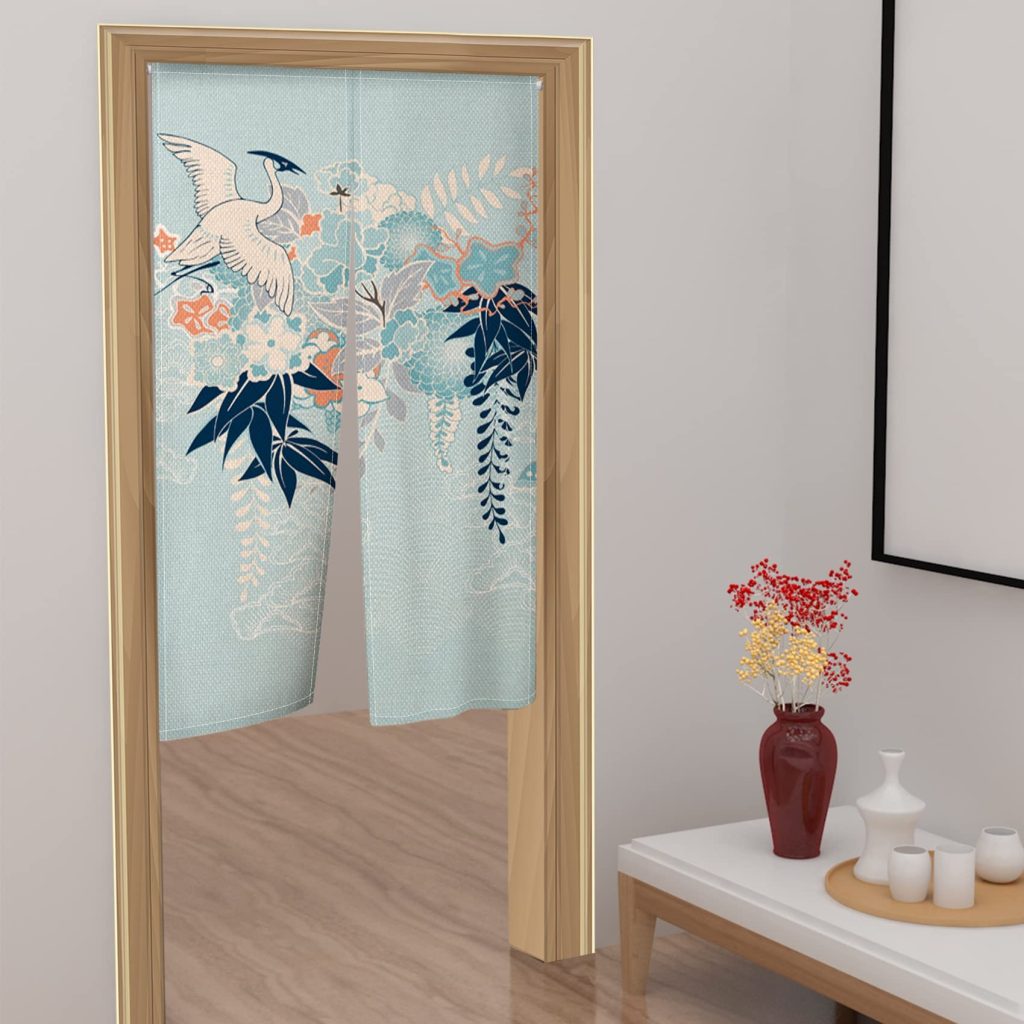
4. Folding Screens
Folding screens are incredibly easy to set up. Just position them in front of the doorway; voila, your screen door is ready! No extra space, no electric drills, and definitely, no muscle power required. They come in various materials like wood, bamboo, fabric, leather, and even metal, allowing you to pick one that complements your interior style and withstands your lifestyle demands.
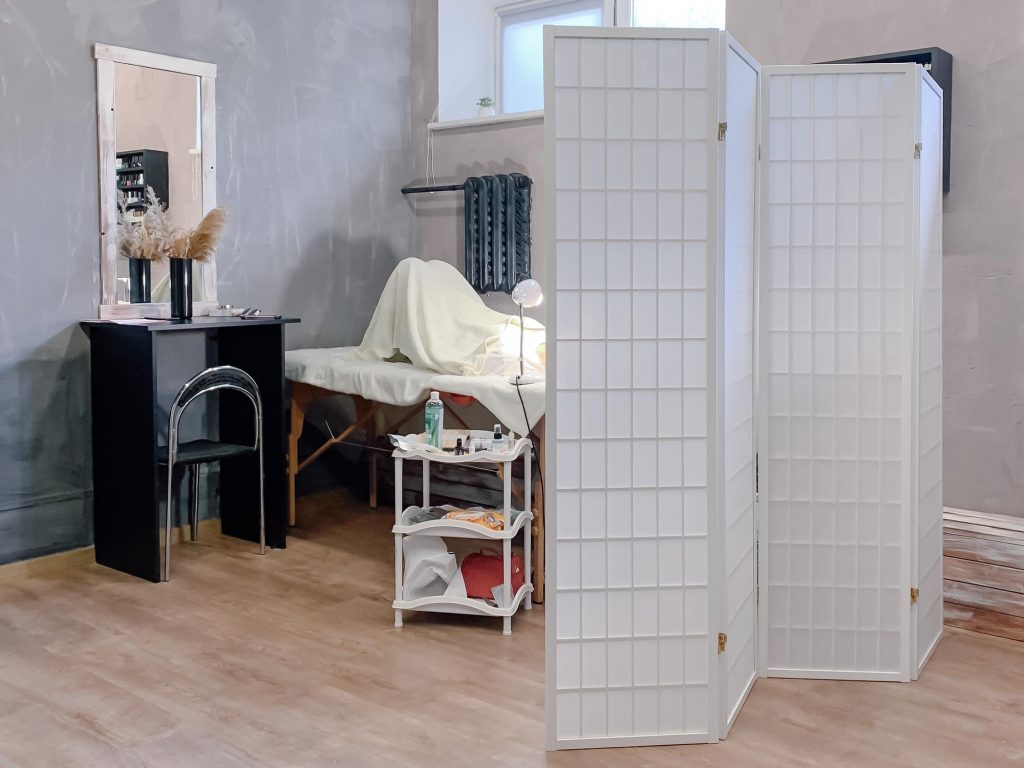
But how about sound control? While folding screens primarily serve as visual barriers, they provide a small to no degree of sound resistance. So, while they might not turn your connected rooms into recording studios, they can’t cut down echo or dim the clattering sound from the other side.
5. Rugs as Doorway Covers
Rugs are textile floor coverings typically made from materials like wool, cotton, silk, or synthetic fiber, dating back to ancient civilizations. Not just confined to floors, they have always been an integral part of home decor, owing to their diversity in patterns, colors and textures.
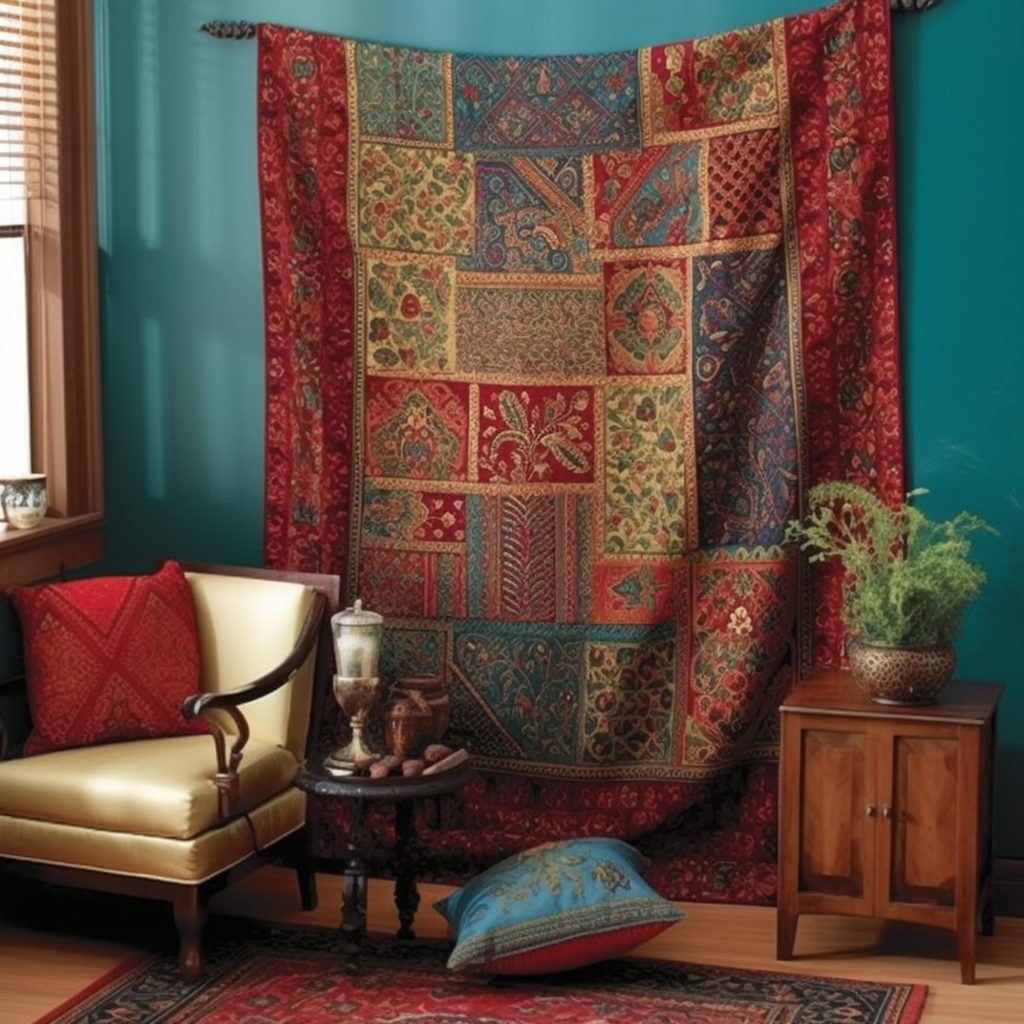
But how might a rug slip into the role of a door substitute? Rugs provide privacy and separation, just like traditional doors, but with an added dash of creative flair. Especially if you have an unused rug, this idea transforms your doorway into a lively, boho-chic space without any additional costs!
- To get started, ensure the rug size aligns with your doorway’s dimensions. If you want a complete cover-up, your rug should ideally be floor-to-ceiling length. Width-wise, it should be wider than the doorway, but remember, not too wide!
- Next, secure the top edge of the rug onto a rod or a wooden dowel, much like a curtain. It gives your rug a stable base and keeps it hanging straight instead of sagging.
The charms of using rugs aren’t just limited to uniqueness. The thick, dense weave of rugs can insulate against drafts, keep out noise, and even add warmth in cold weather. Furthermore, you can switch them out based on seasons, festivals or even moods, enriching your custom, Stay-in, rug-tastic doorway experience!
Finally, while this innovative approach adds a delightful aesthetic appeal, it’s essential to consider its practicality in your lifestyle, whether it’s about the privacy requirements or the rug’s maintenance.
6. Quilts
Quilts can be excellent for creating an inviting and cozy doorway cover. They come in many patterns, colors, and sizes, which you can easily customize to fit the doorway. Find a quilt pattern you love or one that complements your interior decor, and hang it with a tension rod or some hooks. Easy to install and change, a quilt can provide a warm and comforting vibe, especially in colder months.
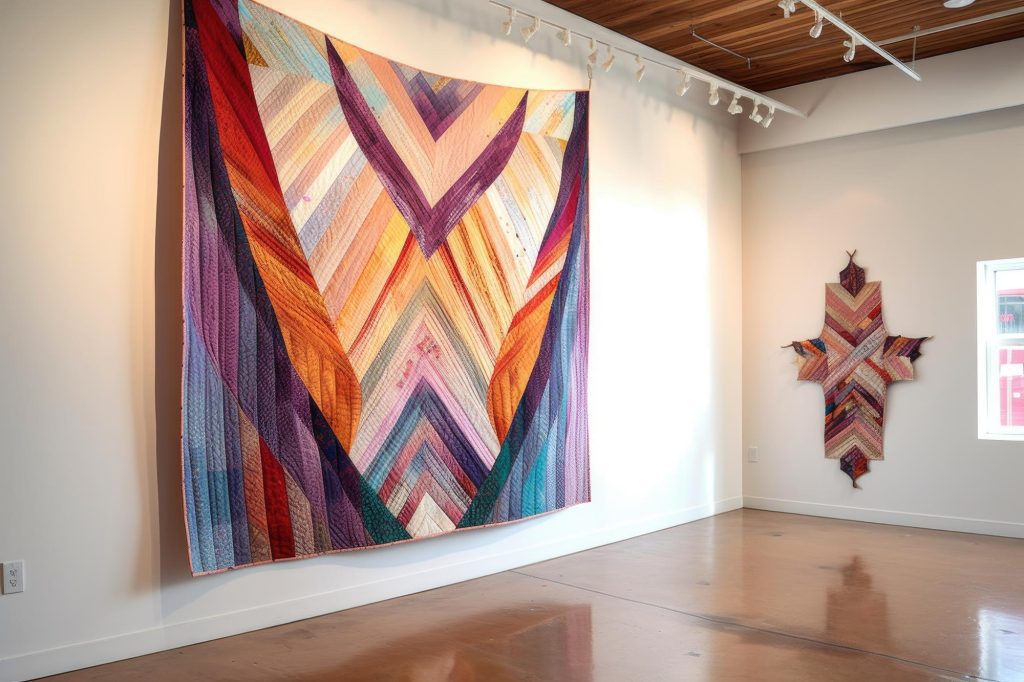
7. Textiles
Textiles, on the other hand, offer a broader range of styles and atmospheres. The options are endless, from lightweight, flowy fabrics that create an airy, romantic feel to heavier, patterned textiles that invoke an exotic or bohemian vibe. Just like with the quilt, all you need is a tension rod or hooks, and you’re in business. And, because textiles are generally light, they will hardly restrict the overall airflow.
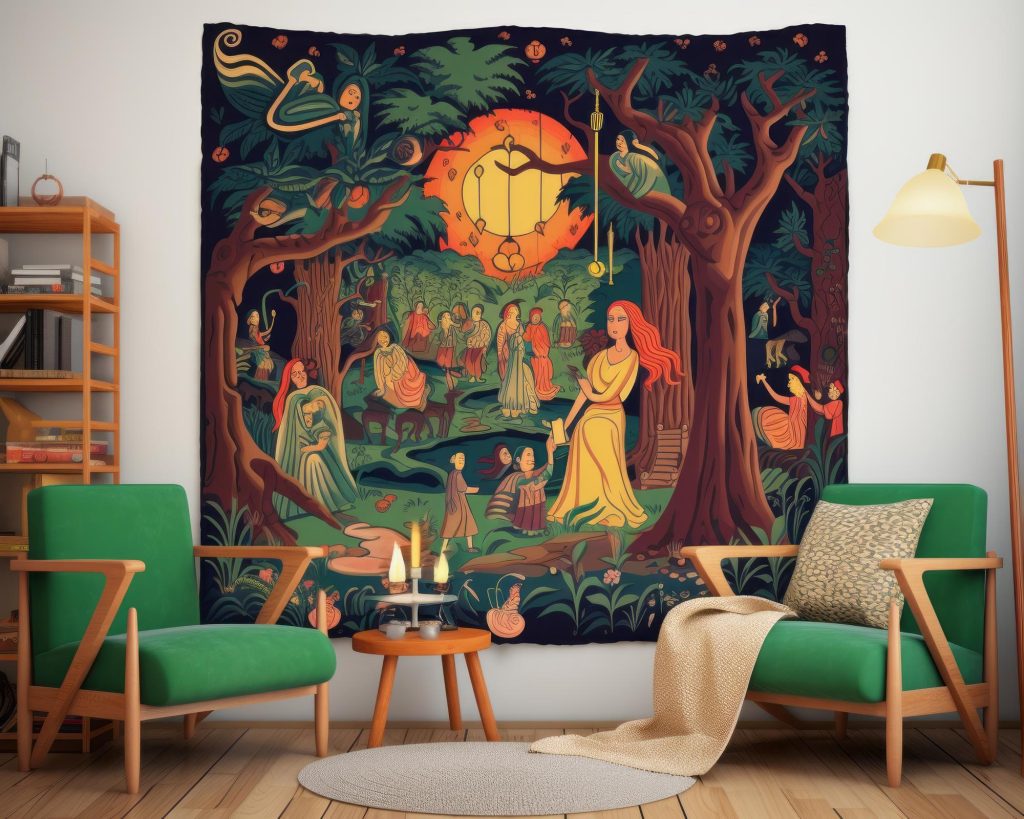
8. Macrame
Macrame is a type of textile that is created using knot-tying techniques. Originating from the 13th-century Arabic weavers’ hand-knotting excess threads along handwoven fabrics into decorative fringes, Macrame has become quite a staple in modern boho-chic home decoration. Macrame door curtains fill in your doorway and serve as a piece of art. Choose your colors wisely to contrast or match your room’s color scheme.
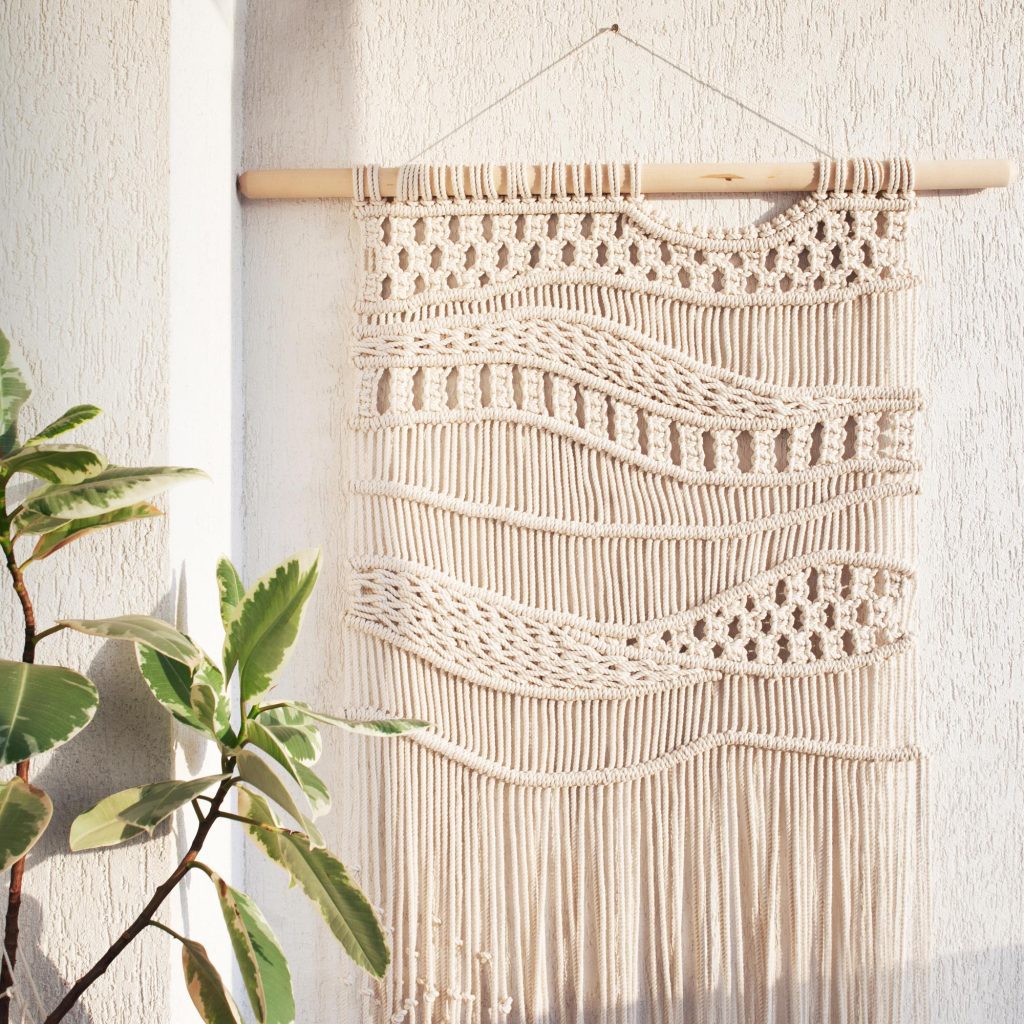
But, as charming as this option might be, you should be aware of its limitations. Macrame doesn’t offer as much privacy or noise reduction.
9. Saloon-style Swinging Doors
Cutting edge and delightfully nostalgic at the same time, Saloon-style swinging doors ooze charm while keeping an area semi-private. These are also referred to as café doors or batwing doors, offering a dialogue with the Western culture of the US. They usually are two lightweight doors that swing in both directions, allowing easy passage. Besides the vintage appeal, these doors add a touch of drama to the home. Remember, these doors work splendidly for spaces like the kitchen or a fun game room.
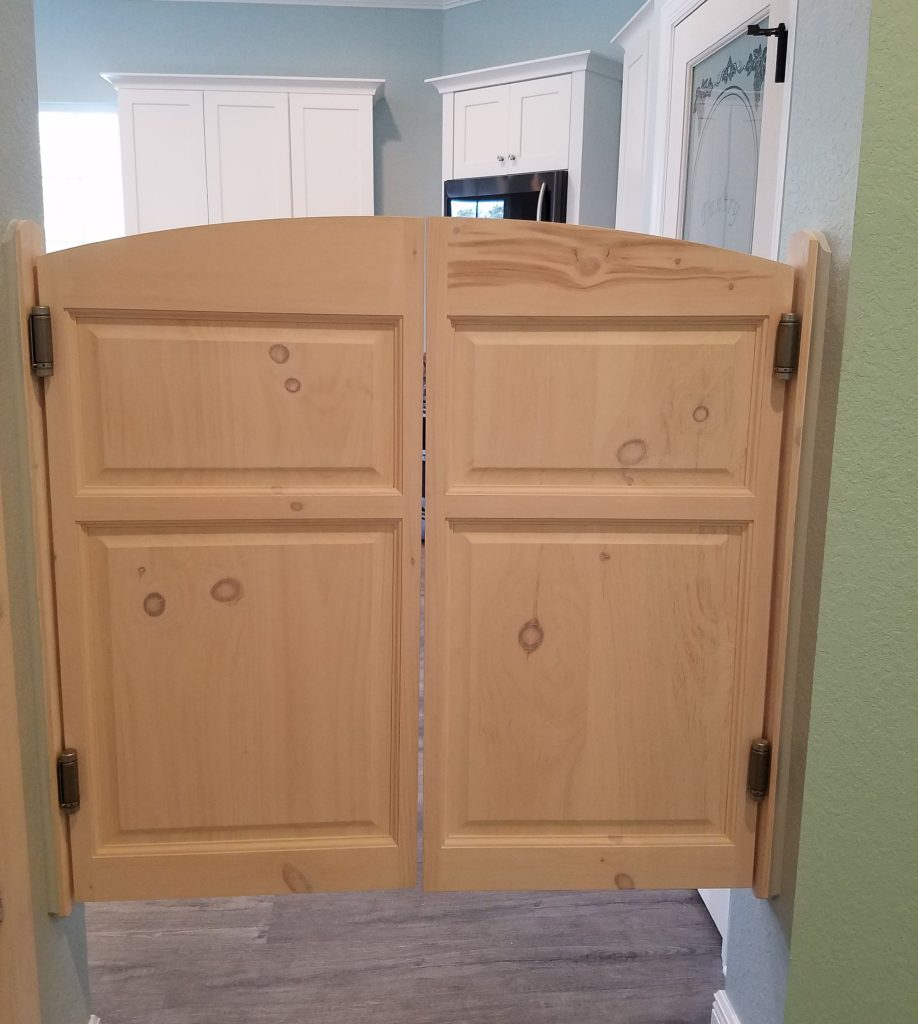
10. Bamboo Curtain
A bamboo curtain can provide a great doorway solution for those who lean towards a bohemian, tropical, or Asian-inspired decor. Bamboo curtains are environmentally friendly, easy to install, and quite affordable. They can be hung from a curtain rod, providing a clear division of space and a touch of whimsy. They can be found with different designs and even painted artwork, making each bamboo curtain a potential work of art for your home.
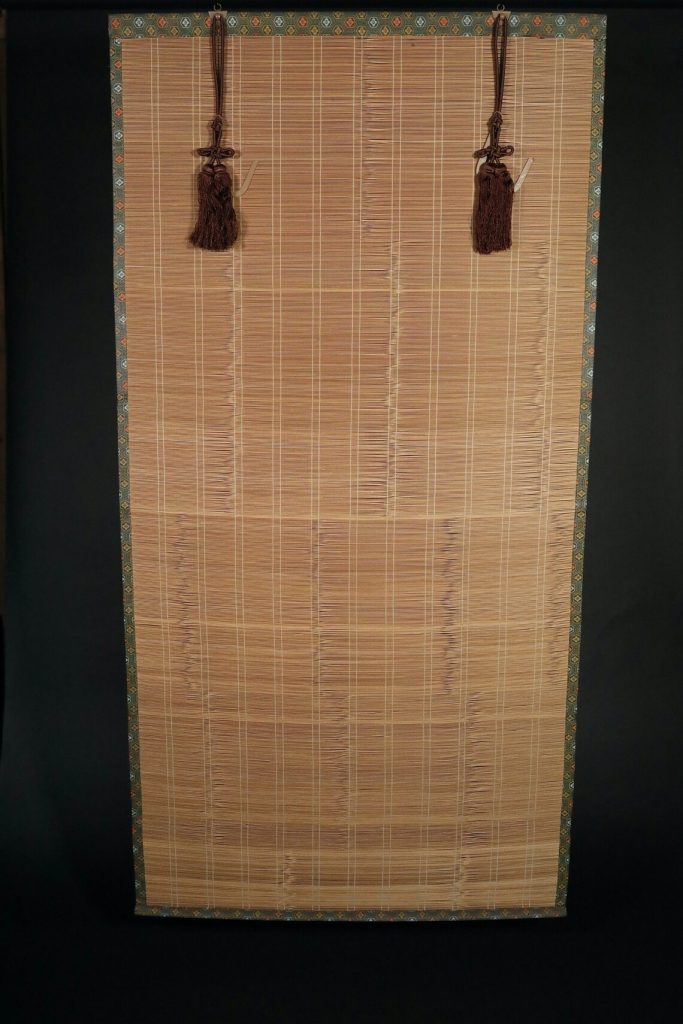
11. Acoustic Dividers
Has that doorway between your living room and the television room become a noisy battlefront? An acoustic divider might be the shield you need. These dividers, specifically designed to reduce noise, come in handy for large, open spaces that echo too much or between rooms where the noise levels differ considerably.
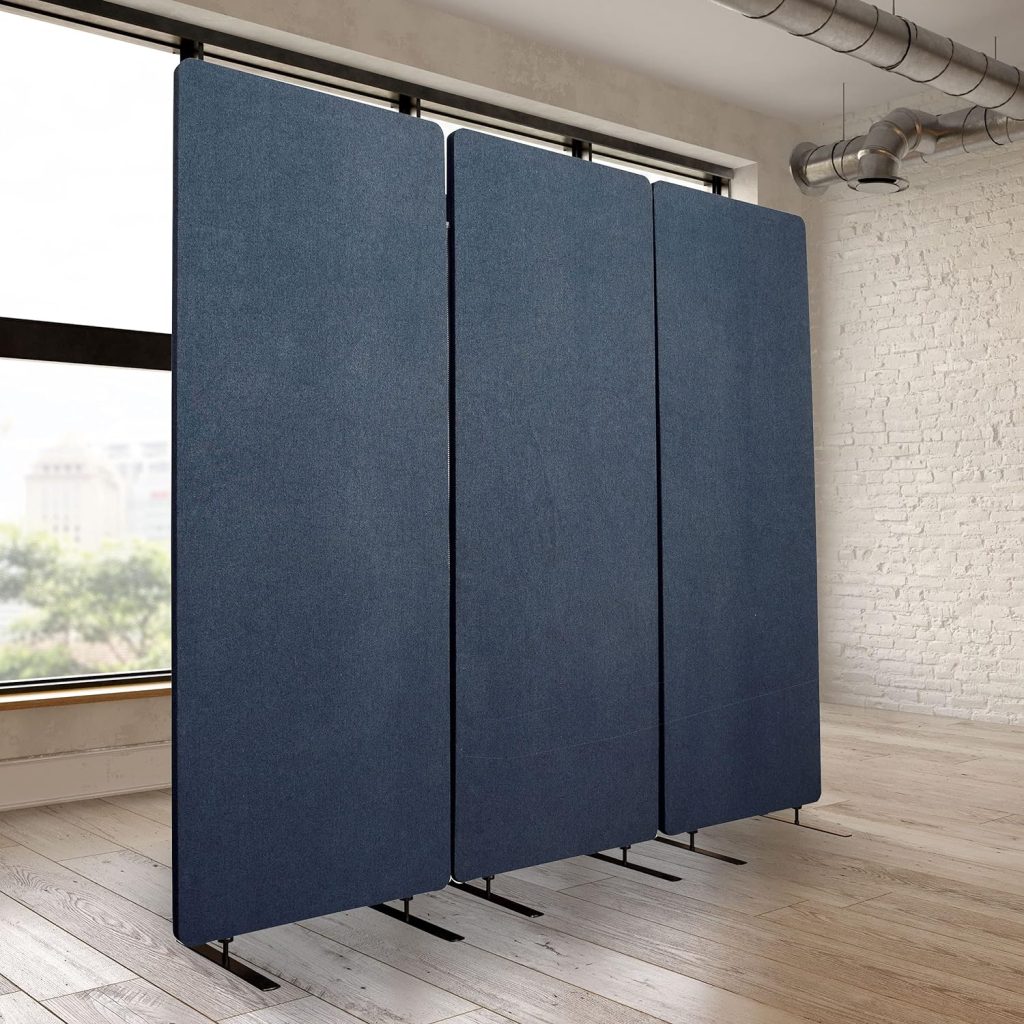
Acoustic dividers, sometimes known as “noise control partitions,” are movable walls built to reduce and absorb sound. Typically, they are made from dense materials, thereby perfect for blocking sound transmission. They can be used anywhere there’s a need to reduce sound. Still, they’re especially useful in spaces like a doorway, where you may want to preserve your ability to access both areas easily. They provide a temporary solution that can be moved in and out when necessary
Just like folding screens, these noise munchers require no drilling or hammering. They’re freestanding.
12. Acoustic Curtains
Acoustic curtains are a great way to create a barrier to distracting noise. While their design and principle are simple — help absorb, block, and minimize sound — the difference they can make is significant. These are thicker and heavier than your average curtains and are often made from a densely woven fabric such as velvet, suede, or polyester.
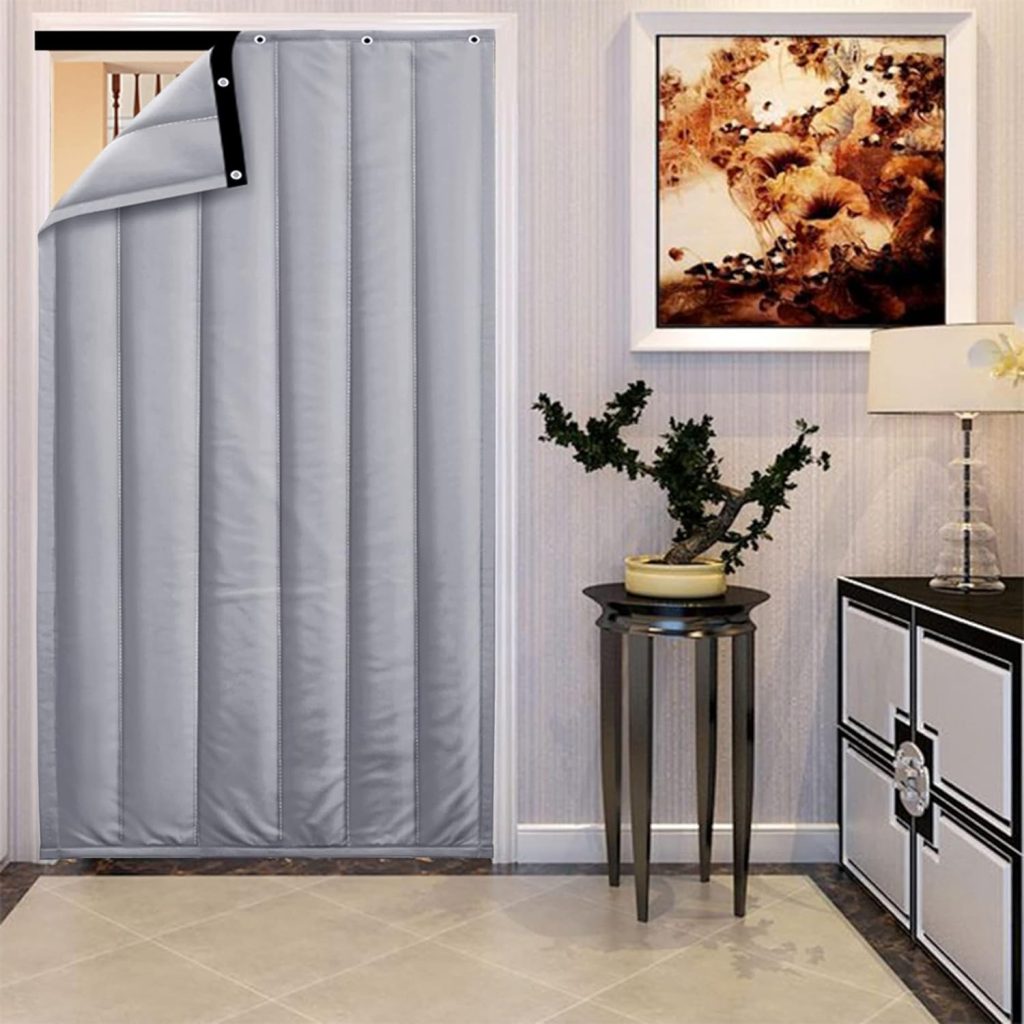
Installing these curtains is as easy as hanging regular ones. It can be done by simply using a curtain rod, rings, or a track system, depending on the design of the curtain. But, when installing, ensure that the curtain is wider and taller than the doorway for maximum coverage and effectiveness.
These curtains might not completely block out the sound as a door does, but they can significantly reduce the noise level.
Advanced Options
Are you looking for an alternative to doors that still get the job done while adding a captivating flair to your space? Ent er: Advanced doorway ideas that are as practical as they are aesthetic! In this section, we will delve into a couple of upscale options to cover a doorway without a traditional door.
1. Bookcase
One unique way to cover a doorway without a door is by using a bookcase. Yes, you heard it right – a bookcase!
While using a bookcase as a separator may bring Harry Potter-like secret passageway vibes, it’s a convenient and stylish option you should consider. A bookcase can effectively cover a doorway while providing additional storage space and contributing to your home’s overall aesthetic appeal.
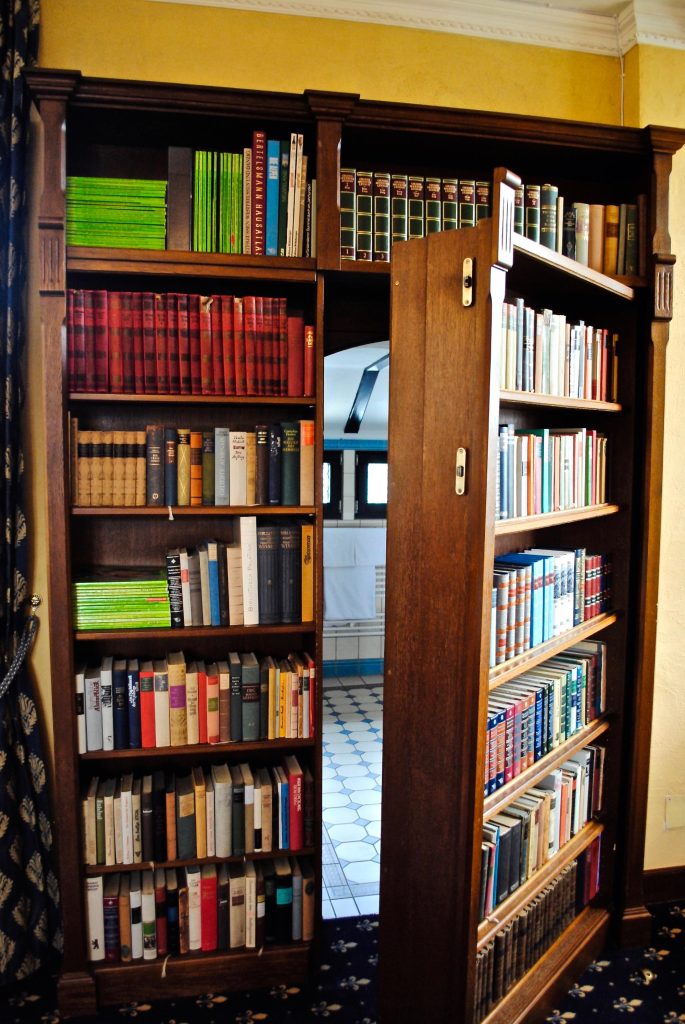
Choosing the right bookcase for your doorway will depend largely on your taste and the existing decor in your home. Keep in mind that it should fit snugly and securely in your doorway. You can choose a pre-made bookcase that fits your doorway, or you can build your own if you’re more of a DIY lover. Either way, you’re turning a doorway into a showcase for books, knick-knacks, and other eye-catching objects.
It’s a win-win solution for book lovers and design enthusiasts looking for a doorless space division. You get a private space and a charming and functional bookcase, a perfect addition to a home with character. So go ahead and give it a try!
2. Shoji Sliding Doors
A world away from the humdrum of traditional doors, an option brings a touch of Japan to your home. Shoji sliding doors are Japanese-style panels crafted from translucent paper housed in a wooden frame. Shoji doors can diffuse light, soften harsh lines, and give a soothing, zen-like vibe to any space.
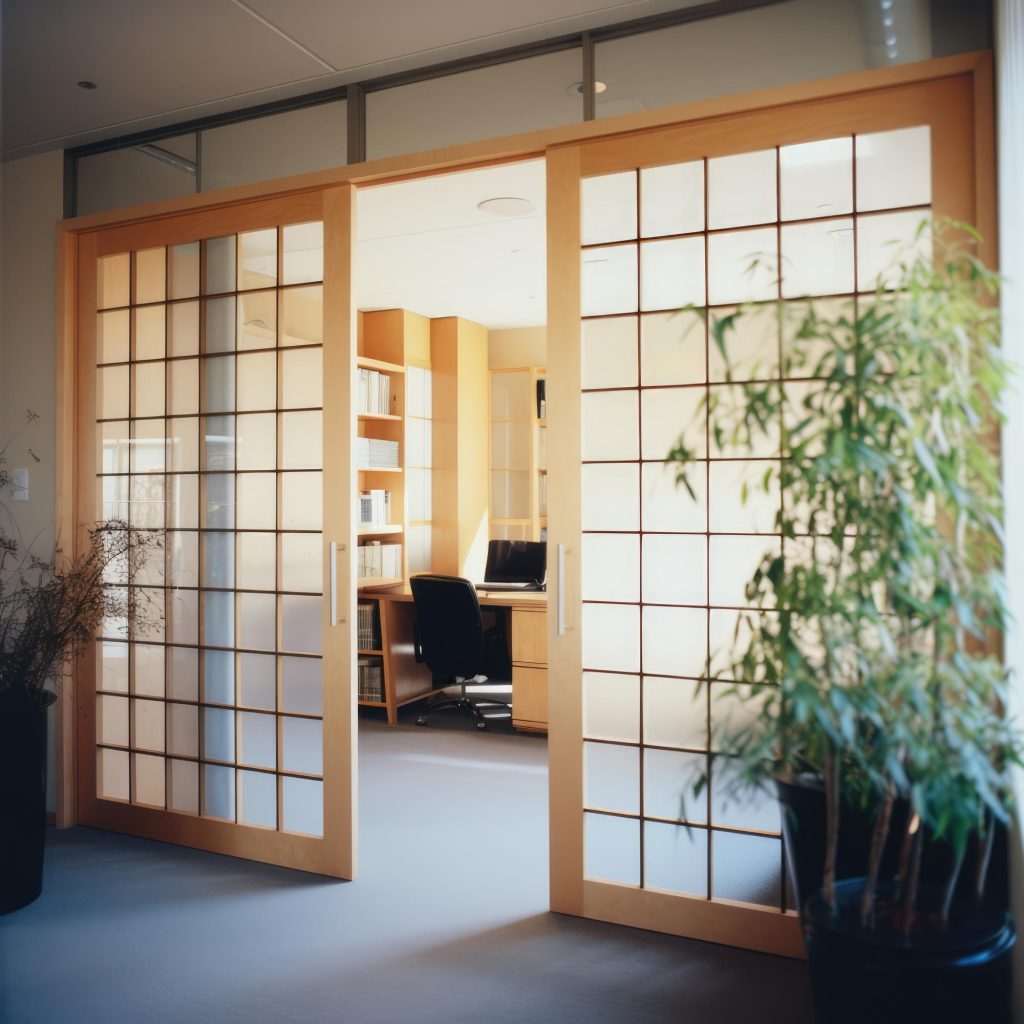
Installing Shoji sliding doors requires more renovation. These doors are typically mounted on tracks and slide with a gentle touch, saving space and introducing a pleasant sense of tranquility to your home. Did you know the light-penetrating characteristic of a Shoji door was used in Japanese architecture to manipulate light and create a sense of serenity? Imagine bringing all that calm to your own home!
3. Barn Doors
Consider barn doors for a more rustic yet equally sophisticated solution to cover a doorway. These are not your standard slapped-together barn doors but a nod to a simpler time with a stylish twist. Like picking a piece of artwork, selecting a barn door can be a statement of your personal style. This door type is characterized by a large, sturdy wood door that slides along a rod outside the wall, like a moving piece of wall.
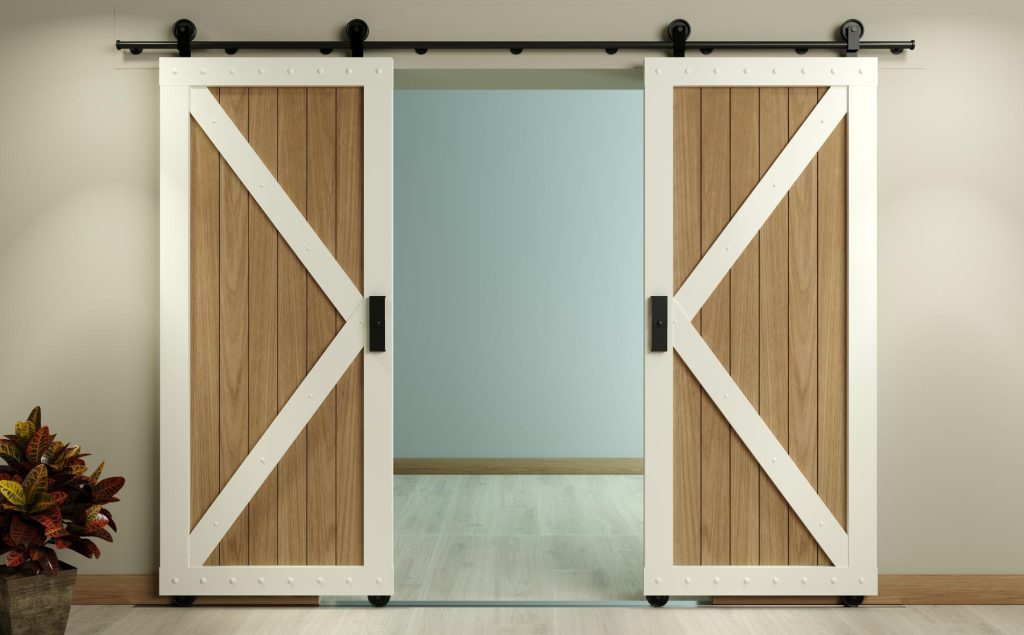
Barn doors come in many colors, textures, and styles. Whether your home boasts a farmhouse aesthetic, a sleek modern look, or a comfortable country ambiance, there’s a perfect barn door to elevate your interior décor. Budget-friendly or high-end luxury barn doors can be adapted to suit every taste.
One major appeal of barn doors is that they are ever so easy to install and offer a lot of versatility. Mounted on a sliding track, they take up less space than traditional swing doors.
Though Shoji Sliding Doors and Barn Doors might not be the “standard” when looking to cover a doorway, they offer advanced, trendy options that function and impress. Imagine your guests’ delight when they see you’ve elevated your doorway to an art form!
In the end, the solution to cover your doorway without a door relies on your personal needs, style, and the ambiance you want to create in your space. Whether you opt for an acoustic curtain, a colorful beaded curtain, or a bohemian rug, both practical and stylish options are available. And who knows? Maybe living without doors, opens up a whole new world of home decoration possibilities.







